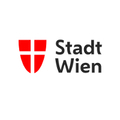Preparatory work for large-scale unsealing has started – 25 new trees, spacious green areas and wide cycle paths for more traffic safety
Vienna (OTS/RK) – With the redesign of Christian-Broda-Platz, the gate to Innere Mariahilfer Straße will be climate-friendly! The previously asphalt-heavy area in the 6th district will soon no longer be recognizable. The sealed surface and forest of red poles gives way to 25 new trees, extensive green spaces and bright paving that transform the square into a shady and cooled foyer of Vienna’s largest shopping street. Wide and structurally separated cycle paths at the intersection of the Belt and Mariahilfer Straße provide greater driving comfort and safety for cyclists. Preparations for the remodeling began this week with water pipe laying. The comprehensive redesign is scheduled to be completed in November.
“I’m really looking forward to the upcoming transformation! The heavily used Christian-Broda-Platz will become a climate-friendly and inviting entrance to the popular Mariahilfer Straße with 25 new trees, water features and over 1300m² of additional green space. Combined with the construction of structurally separated cycle paths, we are implementing a great project in every respect!” says Planning Councilor Ulli Sima.
“The redesign will be much more than just a visual facelift,” promises district leader Markus Rumelhart and adds: “We have achieved our goal of meeting the many concerns of the Mariahilfer* and making the place climate-friendly. The red steles will be replaced with trees, water features will be installed and the lighting will be improved. Together with the bright paving and the new cycle path, the square will be safer, cooler and more livable in the future! I would like to thank the planner, the city’s specialist departments and the generous funding from the ‘Livable Climate Model City’ program.”
Christian-Broda-Platz is a highly frequented place and is located at the traffic junction between Westbahnhof, Belt and Mariahilfer Straße as well as at the subway intersection U3 and U6. Due to its location, the square represents the gateway to Inner Mariahilfer Straße. The previous design is characterized by a lot of asphalt, concrete seating and red masts. The quality of stay suffers, especially in the warmer seasons, as there is too little shade and opportunities to cool off. Currently there are only a few trees, covered masts and five awnings. This no longer meets the requirements of a climate-friendly place. This is now changing fundamentally with the redesign.
Cooling and unsealing with 25 new trees and 1,300 m² of green space
With the redesign, the asphalt on Christian-Broda-Platz will be broken up over a large area, the proportion of green space will be significantly increased and the surface will be unsealed. Most of the space is located above an underground car park and subway shafts and must also ensure access for emergency vehicles, which makes the construction of green spaces a challenge. Nevertheless, during planning, care was taken to create as much greenery as possible. In the future, 25 new trees will provide shade and invite you to linger under the canopy of leaves. The trees are planted in newly built, spacious green areas that are provided with automatic irrigation to ensure the best possible growing conditions. In total, the proportion of green space will be increased by more than 1,300 square meters. The two ventilation structures on the square will also be covered with climbing plants. All seven existing trees will be retained. The sun sails between the masts will also be integrated into the new space design and will continue to be available after the renovation.
Refreshing water
Three water features with a total of 25 water mist nozzles and 25 water nozzles will ensure fun in the future and cool the ambient temperature on hot days. Six additional mist nozzles in the floor, distributed throughout the space, and two additional drinking fountains are also being added. Instead of asphalt, light-colored paving in an unbound construction method is used. This does not heat up as much in direct sunlight and allows precipitation water to seep away, which leads to a cooling effect through subsequent evaporation.
New structurally separated cycle paths
Both the cycling facilities along the Belt and on Mariahilfer Straße are part of Vienna’s main cycle transport network and are used intensively. The redesign will create structurally separated, one-way cycle paths that are at least two meters wide on both sides of the road on Inner Mariahilfer Straße between the Belt and Stumpergasse. Previously, only narrow multi-purpose lanes were marked for cycling in this area. The new structurally separated cycle path heading out of town will also continue across the middle zone between the belt lanes, where there was previously only a narrow multi-purpose lane, thereby creating a significantly improved connection from Mariahilf to Rudolfsheim-Fünfhaus. There is already a wide cycle path towards the city center.
In the middle zone there will be no turning lane for motorized traffic – the space will be used for the new, wide cycle path and for a new green area with four standard bushes. The renovation work means that cycling and motorized traffic are better separated.
Questions & Contact:
Can Guven
Media spokesman StRin Ulli Sima
Can-paul.gueven@wien.gv.at
0676811881350
